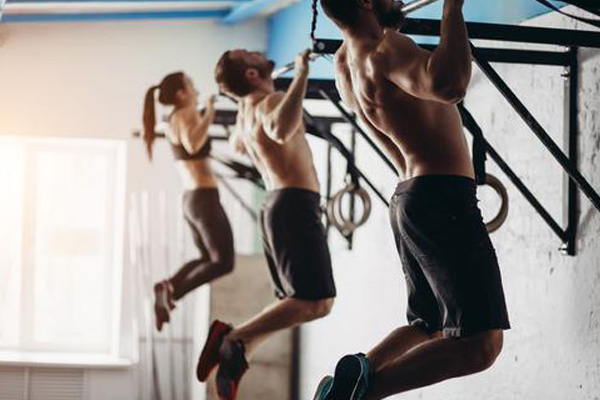
Rehabbing a shoulder dislocation involves a structured program aimed at restoring range of motion, strength, stability, and preventing future dislocations. The process is typically divided into phases, and the focus will shift as healing progresses. Here's a general guide to shoulder dislocation rehabilitation:
1. Immediate Post-Injury Phase (1-3 Weeks)
- Goal: Protect the shoulder, reduce pain and inflammation, and begin gentle mobility exercises.
- Treatment:
- Immobilization: The shoulder is often immobilized in a sling for 1-3 weeks, depending on the severity of the dislocation.
- Pain Management: Ice the shoulder for 15-20 minutes several times a day. Anti-inflammatory medications (e.g., ibuprofen) may also help with pain and swelling.
- Range of Motion Exercises: Once the pain has decreased (typically after 1-2 weeks), start with gentle, pain-free movements to prevent stiffness:
- Pendulum Swings: Bend at the waist, let your arm hang down, and gently swing it in small circles.
- Assisted Flexion/Extension: Use your unaffected arm to lift the injured arm gently, focusing on comfortable movement.
2. Early Rehab Phase (3-6 Weeks)
- Goal: Gradually restore range of motion and begin activating muscles around the shoulder.
- Treatment:
- Range of Motion (ROM) Exercises:
- Passive ROM: Use your other hand or a physical therapist to assist in lifting the arm through a range of motion without activating the shoulder muscles.
- Active-Assisted ROM: Use a pulley or stick to assist with shoulder movements like abduction (lifting the arm to the side), flexion (lifting forward), and external rotation (turning the arm outward).
- Strengthening Exercises (Low Resistance): These begin once ROM improves and pain decreases:
- Isometric Exercises: Activate muscles without moving the joint (e.g., pressing the palm of your hand into a wall to activate shoulder muscles without actual movement).
- Scapular Stabilization: Exercises like shoulder blade squeezes help strengthen the muscles that stabilize the shoulder.
- Range of Motion (ROM) Exercises:
3. Strengthening Phase (6-12 Weeks)
- Goal: Strengthen the shoulder muscles and improve stability to prevent re-injury.
- Treatment:
- Strengthening with Resistance Bands/Light Weights:
- External Rotation (with resistance band): Stand with the band secured at waist height, and rotate your arm outward.
- Internal Rotation (with resistance band): Rotate your arm inward against the resistance of the band.
- Shoulder Flexion and Abduction: Lift light weights to the front and side to strengthen the deltoid muscles.
- Rotator Cuff Strengthening: Focus on exercises that target the rotator cuff muscles, which are critical for shoulder stability.
- Scapular Strengthening: Continue to work on the muscles around the shoulder blades to enhance posture and stability. Exercises like rows and scapular retractions with a resistance band or cable machine are helpful.
- Strengthening with Resistance Bands/Light Weights:
4. Advanced Strength and Stability Phase (3-6 Months)
- Goal: Increase muscle strength, endurance, and dynamic stability to prepare for return to full activity and sports.
- Treatment:
- Advanced Strengthening Exercises:
- Push-ups (modified, progressing to full push-ups)
- Dumbbell presses
- Lateral raises
- Plyometrics/Functional Training: Include exercises that mimic athletic movements and increase shoulder stability:
- Medicine Ball Tosses: Toss a medicine ball against a wall or with a partner to increase dynamic stability.
- Proprioception Exercises: Include unstable surfaces (e.g., balance boards) to challenge shoulder stability during functional tasks.
- Return-to-Sport/Activity Drills: For athletes, sport-specific drills like throwing or overhead movements can be reintroduced gradually under supervision.
- Advanced Strengthening Exercises:
5. Return to Full Activity (6+ Months)
- Goal: Safely return to sports or full activity without fear of re-dislocation.
- Continue strengthening and stability exercises while slowly reintroducing sports or functional activities.
- Work with your physical therapist or trainer to ensure proper form and progress safely.
Key Points:
- Consistency is Key: Follow the rehab program diligently to regain strength and prevent re-injury.
- Progress Gradually: Increase intensity and complexity of exercises as your shoulder strengthens and your range of motion improves.
- Avoid Risky Movements: During rehab, avoid overhead lifting, heavy pushing or pulling, and movements that put excessive strain on the shoulder until cleared by your healthcare provider.
Always work closely with a physical therapist or orthopedic specialist to ensure you are progressing appropriately and to minimize the risk of re-injury. Recurrent dislocations or shoulder instability may require surgical intervention if conservative treatment fails.


